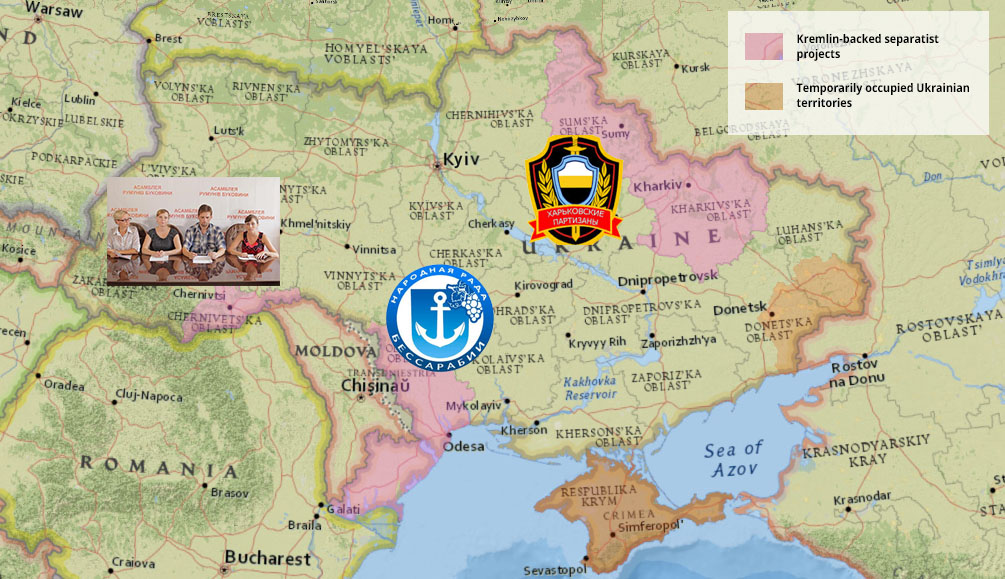[mwm-aal-display]
Click on the dot to jump to the section
The whole world knows about Russia’s invasion of Ukraine in Crimea, Donetsk, and Luhansk and their main proxies: the “Donetsk People’s Republic” ("DNR") and the Luhansk People’s Republic ("LNR") While these three Oblasts are the only areas where Russia has seized territory, they are not the only areas where there has been Russian subversion and accompanying Russian propaganda. Particularly in the Ukrainian areas of Kharkiv (NE) and Odesa (SW), Russian propaganda has promoted supposedly indigenous separatist movements.
Russia is probably continuing to promote these other separatist projects for three primary reasons.
- First: to serve as a cover for Russian attacks and subversion in a similar way that the Donetsk and Luhansk People’s Republics were used as cover for a Russian invasion in the East.
- Second: to deceive the West that Ukraine has big problems in other regions outside the ATO and nurse the hope among pro-Russian people that Ukrainian government will soon collapse.
- Third (and most importantly) to keep a pilot light on for future Russian military activity in these regions. Right now the situation may not be ideal for Russian attack in Kharkiv, for example. However, by keeping the idea of the indigenous “Kharkiv Partisans” alive, the appropriate individuals and propaganda messages can be dusted off and used when the timing is right for propaganda emphasizing that the war in Ukraine is a civil war.
This list of other “separatists” projects is not exhaustive, and there are several other older fronts which Russia could use to leverage for propaganda or mask subversive activity such as the “Odesa Porto-Franco” or the “Transcarpathian Rusyn Parliament.” There are even a few reports of a new Donetsk-based political front for separatism in Zaporizhzhia. The four organizations presented here were all feted in Russian propaganda after the first stages of the invasion of Ukraine; after it became clear that Ukraine would not rapidly collapse. These organizations range in realism from the “Kharkiv Partisans” which (while probably a front for Russian subversion) has an identified leader and spokesman and claims responsibility for terrorist attacks inside Ukraine, to the “Assembly of the Romanians of Bukovina,” which may be entirely a fabrication of Russian propaganda, with no actual members or activities.

Kharkiv/Sumy
“The Kharkiv Partisans:” A terrorist group or just a front for Russian subversion?
Genesis:
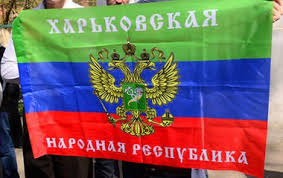
A “Kharkiv People’s Republic” was actually declared on the same day that the Strelkov announced the Donetsk People’s Republic. The “rebels” in Kharkiv first stormed the Kharkiv opera house, believing it to be the mayor’s office. A combination of decisive action by the Ukrainian security services, non-cooperation of local leaders, and inclement weather made the “Kharkiv People’s Republic” peter out by late April.
Months later in late July 2014 a Russian propaganda outlet on YouTube published a claim by a DNR militant that “People are at work in the Kharkiv Region and partisan units are appearing.” My mid-August a few Russian websites carried news of supposed partisan victories in Khakriv, far behind the frontlines.
In September 2014 a group of masked men declared the creation of the “Kharkiv Partisans” on a YouTube Video, and they quickly took credit for a string of small attacks around Kharkiv. Since then they have acquired a publicly identified leader and a spokesman and have taken credit for a number of terrorist attacks inside Kharkiv Oblast. In an interview from last November their supposed leader said that they numbered about 2,500, and that their leaders were former officers, Spetsnaz, and Berkut (the former special unit of the Ukrainian police that was responsible for much of the Maidan violence.)
Propaganda Themes:
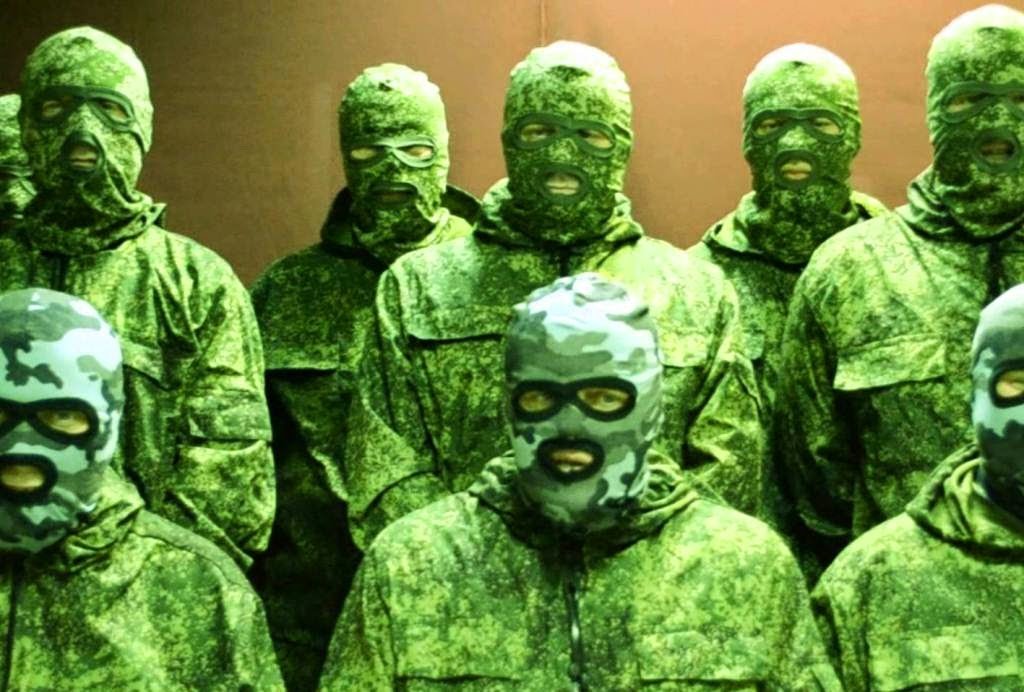
There is some question as to whether the Kharkiv Partisans actually exist or if the organization is merely propaganda cover for attacks carried out by Russian intelligence or their proxies in Donbas. Much like the “Donetsk People’s Republic,” the Kharkiv Partisans may have begun as a propaganda fiction to mask Russian activity and later made into an actual proxy group.
The Kharkiv Partisans’s spokesman told TIME magazine they are mainly funded through “sympathetic businessmen living in Russia.” He also claimed they receive some Russian state support indirectly, through the separatists in Donetsk.
The Kharkiv partisans consistently deny credit for terrorist attacks that generate too much negative publicity and insist that their greatest coups are successfully covered up by the Ukrainian state. Any “good” attacks are the work of the Kharkiv Partisans while “bad” attacks are provocations by the Ukrainian Security services or the work of a radical faction. Not long ago the leader of the Kharkiv Partisans once claimed that there is another partisan detachment in Kharkiv called “Starinov” which uses the symbols of the Kharkiv Partisans but is not actually connected to them. No doubt future atrocities that cannot be blamed on the Ukrainian security forces will be blamed on this separate entity that pretends to be the Kharkiv Partisans.
Leaders:
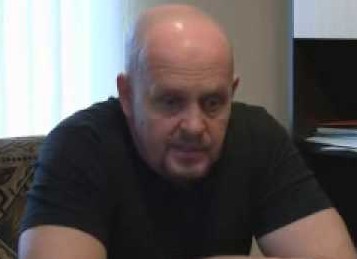
Oleg Sobchenko: The declared leader of the “Kharkiv Partisans.” In an interview, he claimed to be an Soviet Army veteran who served on the Afghan border and later worked in the MVD. He lives in Russia.

Filip Ekozyants: The spokesman for the Kharkiv Partisans is a minor YouTube celebrity on far-right Russian social media. In addition to being the spokesman for the Partisans, he uses his YouTube channel and his social media pages to spread a number of Radical Orthodox and anti-Semitic messages, like railing against the “radical Jews” that are destabilizing Ukraine or engaging in a video-correspondence with the prominent Russian Orthodox Archpriest Vsevold Chaplin. A former wedding singer from Kharkiv, Ekozyants is now based in Russia. He regularly posts YouTube videos containing threats and anti-Ukrainian propaganda. He often posts promises of terrorist attacks against Ukraine on his YouTube channel that sometimes actually occur. Ekozyants claims to be an associate of the former pro-Russian "people's governor of Kharkiv" Konstantine Dolgov. He posts bank account information for direct donations on his videos.
Incidents:
Kharkiv has been the most active area for Russian subversion outside the ATO zone. During the winter of 2014-15 there was a rash of explosions in Kharkiv, several of which were claimed by the “Kharkiv Partisans.” Most of the explosins occured very early in the morning and caused no casualties. This was probably by design. The subversives wanted to spread fear and humiliate the Ukrainian security services without getting the unwanted international attention that would accompany deaths. This changed in early 2015.
In January 2015 an IED attacked a group of Ukrainian activists on their way back from observing a court case involving a member of the Svoboda party. This bomb injured 14 people. In February another bomb with shrapnel detonated during a pro-Maidan march, killing four people. As usual with attacks that kill or wound people, Ekozyants said the Kharkiv Partisans were not responsible for this attack. However, according to Interior Ministry advisor Anton Gerashchenko the design of the bomb fuse and trigger were the same as those used in attacks claimed by the “Kharkiv Partisans.” The SBU quickly arrested four people believed to be associated with this attack. The SBU posted a YouTube video of an arrest of two “Kharkiv Partisans” who were captured along with a rocket launcher. The SBU reported that they received their training and instructions in Belgorod Russia. In March two magnetic bombs were placed on the car of Andrei Angolenko, the commander of a Ukrainian National Guard unit. One of the bombs did not explode, and the commander and his wife were only injured.
After this attack there was a relative lull in terrorism in Kharkiv. In March Ekozyants posted a video instructing all partisan units to avoid a specific area of SE Kharkiv Oblast because the Ukrainians were using drones there to locate and destroy partisan groups, an admission of recent success by the Ukrainian security services (while also pretending to have significant units in the field.)
In April there were reports
of low-level sabotage in Kharkiv, derailing train cars etc. In May the Ukrainians discovered three weapons caches around Kharkiv. In June the SBU disrupted a cell of three Ukrainian citizens in Kharkiv who were reportedly working for Russian military intelligence, along with an extensive arsenal of explosives, sniper rifles etc.. In June the SBU posted photos of a man they caught in the act trying to place an IED under a rail line in Kharkiv. The “Ministry of State Security of the DNR” reportedly dispatched the saboteur. In late August 2015 the SBU announced it had disrupted another Russian terrorist cell in Kharkiv operating under the command of one of the leaders of the Donetsk irregular group “Oplot” (which was previously commanded by the current DNR “President” Zakharchenko.)
Russian subversives have set their signs beyond Kharkiv, and the “Kharkiv Partisans” to announce this. In late May the leader of the Kharkiv Partisans stated in an interview that they are preparing to work in Sumy Oblast (to the north of Kharkiv.) A little over a week after the interview, the SBU disrupted a sabotage attack on an oil pipeline in Sumy Oblast.

Odesa
“Odesa Underground / Odesa Fraternity.” A propaganda project and/or an Odesan copy of the Kharkiv Partisans?
Genesis:
Odesa has been the target of a pro-Russian bombing/sabotage campaign much like the one in Kharkiv. One of the attacks was claimed by a group calling itself the “Odesa Defense Committee” but they were not heard from again. By May 2014, the Ukrainian security services had identified 21 terrorist attacks in Odesa, most of them low-level and all but one without casualties. Ukrainian security forces cracked down and arrested a number of accused operatives. In mid-July, the Ukrainians expelled the Russian diplomat Valeriy Shibeko who worked at the local Russian consulate. The commentator Nikolai Holmov mentioned in a radio show that this expulsion seemed to coincide with a drop in bombings and pro-Russian activity.
The lull may not last. In May 2015 a known pro-Russian activist started claiming he was the spokesman for a new armed group called the “Odesa Underground.” They took credit for bombing two billboards in Odesa in mid-June. They were not much noticed until early July when the “Odesa Underground” spokesman said that they had bombed an Odesan café owned by a Ukrainian patriot. The YouTube video taking credit for this attack included photographs, biographies, and addresses of several other Ukrainian political activists in Odesa. This was a barely-veiled threat.
In mid-September a related political organization named the “Odesa Fraternity” had an inaugural conference in Russian-occupied Donetsk. The Odesa Fraternity is a who’s-who of pro-Russian Odesans living under Russian protection.
The group openly includes the spokesman for the “Odesa Underground,” as well as another convicted terrorist from the early 2000’s and many other known separatists from Odesa. The Odesa Fraternity was called the “political wing of the Odesa underground” in the Russian press. The meeting notes, which were posted online, said that the conference “...is grateful for the support of the Supreme Council of the "DNR," its chairman Denis Pushillin, and the leader of the republic Aleksandr Zakharchenko.”
Leaders:
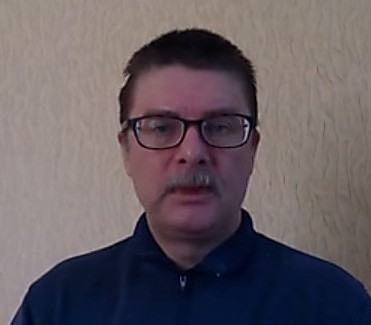
Mykhailo Dolgov: Spokesman for the “Odesa Underground” and also a declared counclean of the management board of the “Odesa Fraternity.” He was a known pro-Russian Ukrainian who was involved in anti-Maidan protests in 2013/14 and reportedly decamped to Russia. He has been posting statements supposedly from the "Odesa Underground” since May, but his videos only really started to get attention recently.

Andriy Yakovenko: Chairman of the conference for the “Odesa Fraternity.” He is he former First Secretary of the Odesa Communist Youth League (komsomol) Andriy Yakovenko was arrested in 2002 in connection with a bombing in Odesa. In 2004 he was sentenced to a long prison term for attempting to overthrow the government and establish a “Black Sea Soviet Republic.” His prison was in the territory seized by Russian irregulars in Donetsk, and he was freed in August 2014.
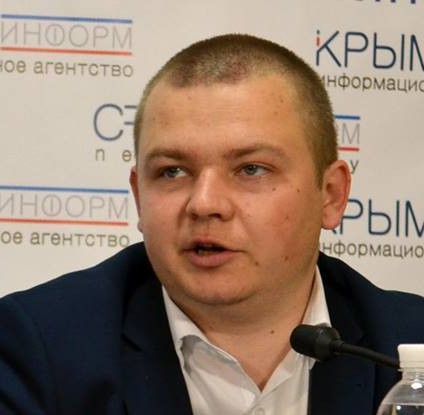
Oleksiy Albu:
A former reserve intelligence officer and member of the Communist Party. He joined the Odesa Regional Council in 2010. He fled to Russian-Occupied Crimea in 2014. He claimed that he joined the “Ghost” separatist brigade fighting Ukraine in Luhansk Oblast.
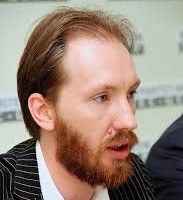
Oleksandr Vasyliiv:Former deputy in the Odesa city council and member of the pro-Russia “Rodina” party. After the Maidan revolution, he fled to Russian-occupied Crimea and worked in the Russian puppet-government of the city of Sevastopol before it was formally annexed by Russia. In mid-2014 Vasiliev attempted to found an organization called the “Odesa Defense Committee” in Crimea that seemed to peter out (it is uncertain if this was the organization that took credit for one of the bombings in Odesa.)
Incidents: In August the SBU announced it had detained a group of Odesans plotting sabotage along with an IED. In September the SBU announced it had rolled up an assassination cell targeting a Maidan activist in Odesa. The assassination cell was reportedly at the command of the General Staff of the Russian Federation and directed from Crimea by a retired Russian spy.
On September 27th a bomb exploded at an emergency exit of the Odesa SBU building. Mikhail Dolgov said that the attack was conducted by the Odesa Underground.
“Bessarabian People’s Rada” A political front for a new People’s Republic in a good location
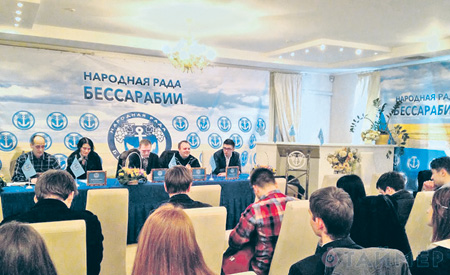
Genesis: Several commentators have noted that the Southwest corner of Ukraine is suited for Russian subversion. It has an ethnically mixed population, is near a Russian military base (Transnistria) and it is connected to Ukraine through only a single bridge over the Dniester (there are other crossings to the north that pass through Moldovan territory).
In late March 2015 a Moscow-based internet service anonymously registered the website rada-bessarabia.org . Not long after an organization calling itself the “Bessarabian People’s Rada” announced a conference in Odesa.
The initial statements of the organization were overtly anti EU and anti-NATO. The attendees at the conference supposedly included several pro-Russian figures from neighboring Moldova Velizar Enchev, a Bulgarian politician who recently started the “Bulgarian Spring” party modeled after SYRIZA.
As the Ukrainian security services cracked down on this potential new separatist wave, Russia’s main television channel carried a story about “detention and intimidation” as “Kyiv continues to ignore the views of national minorities.”
Identified Leaders:

Vira Shevchenko: Current leader of the “Bessarabian People’s Rada.”
Dmytro Yogi: Sevchenko’s assistant.
Dmytro Zatulyviter:
The original leader of the group. He disappeared shortly after the group was formed. Russian propaganda intimates he was arrested by the SBU. He was previously associated with an organization called the “Union of Ukrainian Transnistrians.”
Incidents: In April 2015 shortly after the first conference of the Bessarabian People’s Rada the SBU announced it had captured 20 people who were directed by Russia and about to announce a Bessarabian separatist republic. The People’s Rada may have been designed as a political front for this failed operation.
In May the Bessarabian People’s Rada announced another conference (which may not have actually taken place in Ukraine, or at all.) During this conference the group proposed a draft law for recognition of Bessarabia’s “national-Cultural autonomy.” This meeting was soon followed by a “spontaneous” demonstration in front of the US embassy in Bulgaria in support of the Bessarabian People’s Rada, complete with printed signs in English.
In July the Bessarabian People’s Rada announced they had elected Oleksandr Yankov as the “Commandant of Bessarabia.” Russian propaganda quickly announced that he was the “People’s Governor” – a loaded term after the events of the Donbas. A few days later Oleksandr Yankov denied all connection to the Rada, and said that it is a Russian attempt to break the Unity of Ukraine.

Chernivtsi
“Assembly of the Romanians of Bukovina” A propaganda project to promote the fiction of Romanian separatism
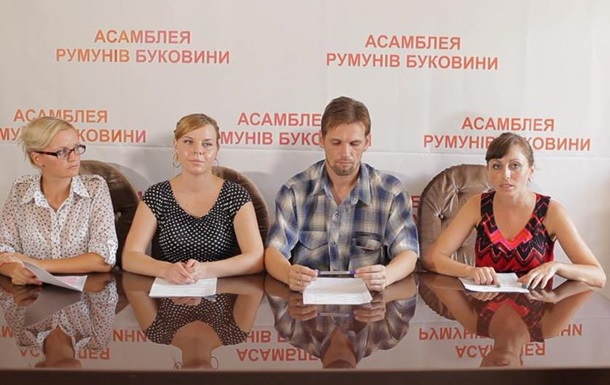
Genesis: This initiative has only announced two meetings in July 2015. The group supposedly called for greater autonomy for the Romanian minority in Western Ukraine. The meetings may have been faked. Stopfake.org has a thorough chronicle (with a video with English subtitles) of the various problems with the reports of a Romanian autonomy movement in Ukraine. The Stopfake.org piece concludes that the meetings reported in Russian media probably never took place, at least not in Bukovina. Nevertheless, reports of the movement were quickly broadcast by Russian propaganda.
A local leader told Stopfake: “This is an informational provocation pitched to destabilize the situation in Bukovina. The provocateurs try to start a made-up quarrel between the Ukrainians and Romainians in Chernivisti Oblast. You can see clearly the strategic hand of the Kremlin here.”
Leaders:
Dorina Kirtoake Coordinator
Cornelia Russu Secretary

The "Republic of Budjak"
In early November 2015 the Russian propaganda project the "Bessarabian People's Rada" changed from being a thinly-veiled separatist project to an openly separatist project, and it is now targeting Moldova in addition to Ukraine. The website for the People's Rada says that they declared that they wanted independence during a conference in late October and planned to hold a referendum soon in the territory they claim. Most interestingly, they also declared that Gagauzia, a portion of southern Moldova, would be part of their new "Republic of Budjak." Gagauzia is an autonomous region in Moldova populated by a Turkic people (for background, see this article by Luke Coffey from earlier this year).

